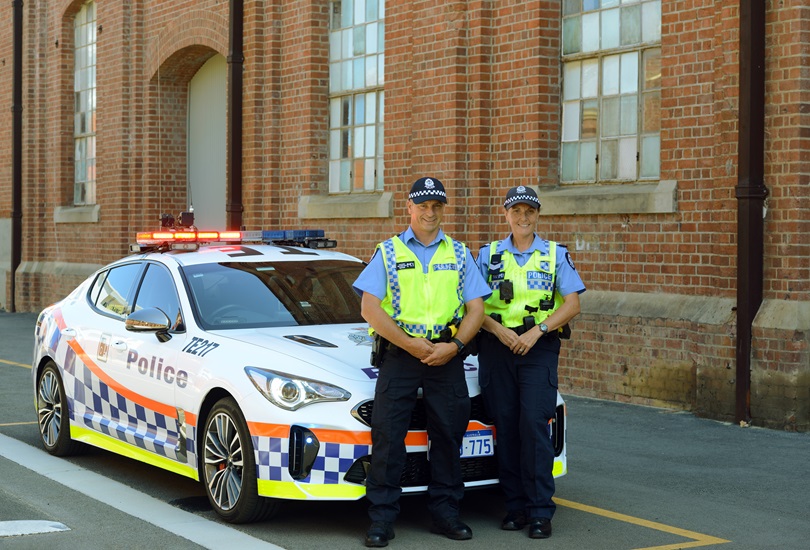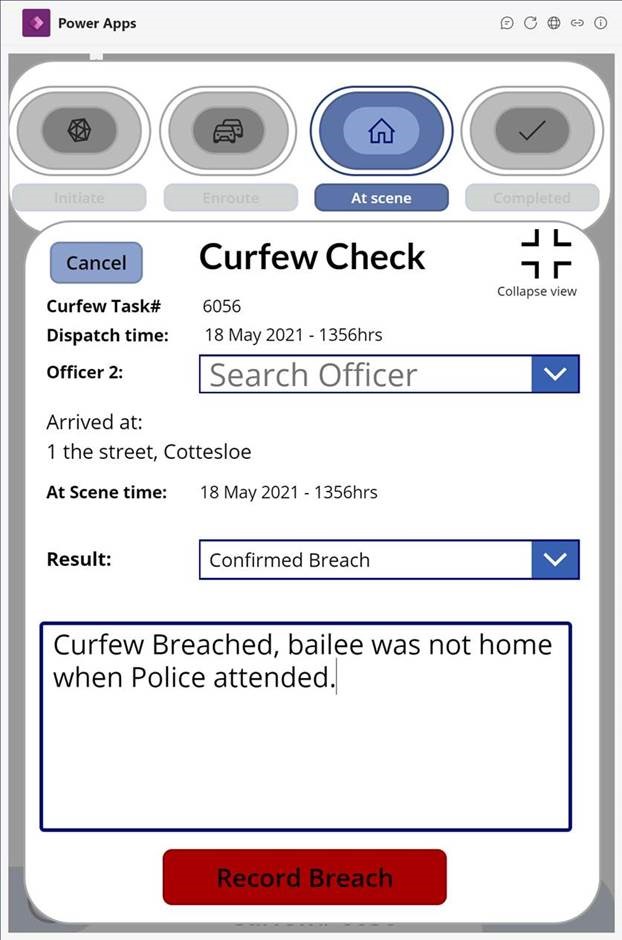
Western Australia Police builds curfew app to call time on crims
When high risk offenders are released back into the community on bail, a curfew is often imposed. They need to be at a specified address between certain hours. Checking whether or not they are adhering to the curfew falls to the local police.
In Western Australia this has previously been managed through a largely manual process that was handled differently by each individual police station.
Mark Cook is a constable with the Western Australia Police (WAPol) and has plenty of front-line experience of traditionally managed curfew checks.
First a police officer needs to understand who in their beat has a curfew order. When they’re working close by, and have the time, the officer visits an address on the curfew list, knocks on the door, checks the correct person is there and complying with the bail-related curfew.
Notes about whether the person was compliant or not could only be uploaded to the police database when the officer returned to the station.
There was little to no opportunity for police to report immediately when they were about to make a curfew call, or if one had been successfully (or unsuccessfully) completed by other officers just a few minutes earlier. Meanwhile it was easy to end up duplicating records about curfew checks, injecting inefficiencies to the process.
Cook knew there had to be a better way, and after connecting to Acting Inspector Darren Henstock, the Innovation and Future Lead for WAPol’s Digital Policing Division, he developed a Power App intended to manage the process end to end.
It’s injecting massive efficiencies that Henstock says could stack up to as much as half an hour saved per curfew visit.
Click to curfew

The curfew app presents curfew addresses to local police officers on their mobile phone. When they plan to conduct a visit they click on the address so that everyone knows where they are going. If the person is at the right address at the time that the curfew specifies then the officer can simply click to complete the check with all the information instantly available and accessible.
Henstock says that the app also has a dashboard allowing supervisors to see checks in real time, which in turn removes significant effort in adding individual curfew jobs on the dispatch system and thus provides more clarity on officers’ availability for controllers.
The app has been tested in five stations and is now being rolled out across Western Australia. This has the additional benefit that now every police station and police officer will use the same language and system for curfew checks reducing the risk of confusion or miscommunication.
As part of his push for innovation, Henstock is encouraging the entire police force to share their ideas for how technology could help them do their jobs more efficiently and safely. There are about 1,600 police officers who are now actively sharing ideas via Microsoft Teams, with each project set up as a separate channel.
As the initiator of the curfew app, Cook has been an active participant. With the entire WAPol force equipped with mobile phones and access to cloud-based applications, Cook had seen Power Apps on his device and realised that it could be used to build an app to manage curfew checks.
Cook started to work with Henstock’s team, and within eight weeks had a proof-of-concept app ready to test. After getting the thumbs-up from field tests, which were held with 200 officers in four police stations, the app has continued to be finessed and Henstock’s developers continue to refine and manage the app based on feedback from front line officers. Long term his ambition is to build much more functionality into the app.
“We just had a bit of feedback from South Hedland, up in the Pilbara,” says Henstock. “They’ve taken it to court with a regular offender who breaches bail on a regular basis, but who constantly gets let back out by the court.
They’ve shown the Power App with the running sheet that sits behind it of all the visits that were done and the lack of compliance and, therefore, they kept the person in custody. Protecting the public is always a great result.
Keeping the app simple is another good result says Cook. “From the get go, I wanted to make it very, very easy to use and user friendly. It’s very, very simple to use and you wouldn’t need to read a manual or user guide. You can pick up like any other app and know intuitively what you’re doing.

“It’s easy one-handed navigation. All the controls are on the bottom of the screen rather than the top so you can use it with a hand free. And a very, very simple colouring system to know who’s been checked, who hasn’t.”
If someone is absent when they should be complying with a curfew, the officer can use the app to share additional information such as what the person was wearing, so that other officers can keep an eye out. In the past that information was stored in someone’s pocket book and wouldn’t be available to other officers until the details were typed up at the end of a shift on the station computers.
By freeing officers from paperwork, the app allows them to spend more time on the beat which inspires community confidence and acts as a crime deterrent.
Cook completed online courses to get himself up to speed with Power Apps, and how to use it to design professional grade applications. “It is really, really sensational, with a ‘what you see is what you get’ concept. You can bring in fields, and it’s quite easy to navigate.
“I also liken it to Microsoft Excel. If you’re a total beginner at Excel, the average user can get through and achieve the basics. Compared to someone who is quite advanced in Excel, who can do a whole lot of formulas, macros, and a whole lot of things in Excel that are quite complex.
“I’d say Power Apps is the same thing, whereas an average user can make something pretty basic. However, to get it to a point where it’s usable as a professional grade application, can be challenging.
“However, that being said there are courses available and YouTube is just such a fantastic resource,” he adds.
The proof-of-concept curfew app was so clearly useful to police officers making curfew checks that Henstock acknowledges he had to push back on requests to use the system until it had been fully tested and any minor kinks ironed out.
Cook has also had to rein in his own enthusiasm, because at present he says; “Every day I wake up and think ‘oh, we could use Power Apps to do this’.”

Broad promise
He’s not isolated in his enthusiasm according to Henstock who says the forensics team has been very interested to explore how it might use Power Apps to build an app to significantly speed up fingerprint analysis.
The Aboriginal Affairs Division is also working on an app, with support from Microsoft, that translates local languages with the expectation that it will play a key role in providing consistency during interactions with First Nation people and supporting both WAPol and Microsoft’s reconciliation action plans.
Henstock says; “We want people to know that they can come into us, they’ve got their idea, they can do a bit (of app development), and then we can support them,” to manage more complex but essential issues around data governance and security.
Having someone like Cook develop the idea and prototype app remains important says Henstock;
It’s the power of the front-line officer, that can come up with an idea. We recognised that idea, we brought him in, pursued his idea and then deployed it out to the front line, and improved the ability of the officer to do their job.

The magic for Henstock comes from WAPol’s ability to champion what he describes as a “built for coppers, by coppers” process that translates into an app that people really want to use, and in the process supports the community and leverages modern technology to keep people safe.
For front line officers like Mark Cook the ability to participate in the innovation process is greatly appreciated. “We’ll get in the car and we’ll whinge to each other about how things work and (that) nothing gets done about it, but in the past you felt powerless to change it.
“Power Apps, and what Darren has done with digital policing and feedback channel, allows us to give feedback on processes that we’re not happy with. That’s really the catalyst. We can start thinking about our processes and give people like myself, the ability and a platform to actually to change it. “
A clear case of calling time on crims.








